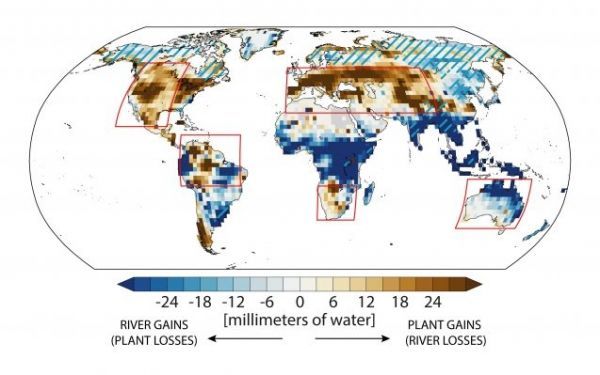As climate changes, plants in North America, much of Eurasia, and parts of central and South America will consume more water than they do now, leading to less water for people, according to a new study in the journal Nature Geoscience. The research suggests a drier future despite anticipated increases in precipitation in populous parts of the United States and Europe that already face water stresses.
The study challenges many climate scientists’ expectations that plants will make much of the world wetter in the future. Scientists have long postulated that as carbon dioxide concentrations increase in the atmosphere, plants will reduce their water consumption, leaving more freshwater available in soils and streams. This is because as more carbon dioxide accumulates in the air, plants can perform the same amount of photosynthesis while partly closing the pores (stomata) on their leaves. Because plants give off moisture through their stomata, this would reduce their water loss to the atmosphere, keeping more water on land in the form of soil moisture, streams and water bodies.
Read more at Earth Institute - Columbia University
Image: Projected future changes in water availability. Blue colors indicate more runoff from precipitation, which may increase supplies for humans. Brown colors indicate that more water will be retained by plants, reducing supplies. (Courtesy Justin Mankin)


